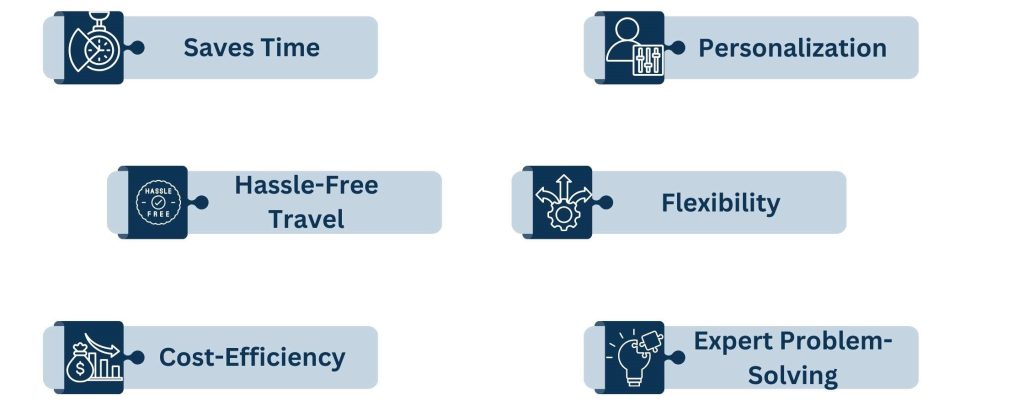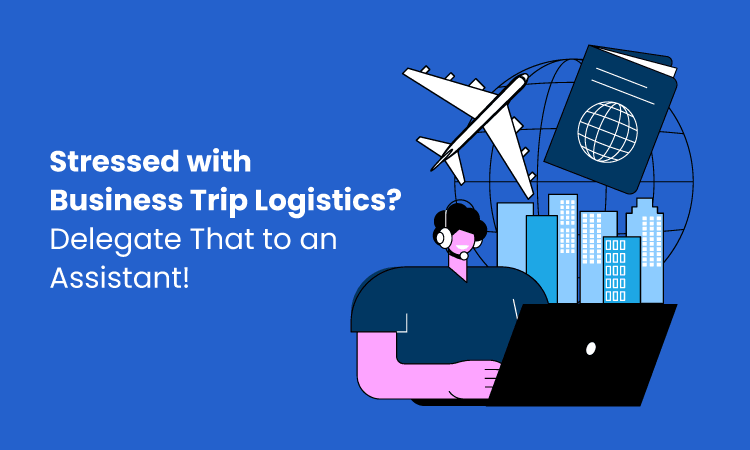Coordinating travel itineraries as an executive assistant can feel like juggling a dozen balls at once. You’re not just booking flights and hotels—you’re creating a seamless experience that saves time, reduces stress, and keeps your executive focused on what matters most.
Imagine having a clear, step-by-step approach that makes this complex task simple and efficient. You’ll discover practical tips and insider tricks to master travel planning like a pro. Ready to take your executive support skills to the next level? Keep reading to learn how to make every trip smooth and successful.

Credit: tasksexpert.com
Key Responsibilities
As an executive assistant, coordinating travel itineraries is a crucial task. You must manage details carefully to ensure smooth trips.
This role involves juggling schedules, booking transportation, and arranging accommodations. Each part requires attention and organization.
Managing Schedules
Managing an executive’s schedule means planning meetings, calls, and travel times accurately. Avoid conflicts and allow enough time for transitions.
Confirm appointments and share calendar updates promptly to keep everyone informed.
Booking Transportation
Booking transportation includes flights, trains, car rentals, or taxis. Choose options that save time and reduce stress for the executive.
- Compare prices and schedules
- Check for travel restrictions or requirements
- Confirm bookings and send tickets promptly
- Arrange special services if needed, like wheelchair access
Arranging Accommodations
Arranging accommodations means finding hotels or short-term rentals near the work location. Comfort and convenience are key factors.
| Accommodation Type | Key Considerations | Booking Tips |
| Hotel | Close to meetings, quiet rooms | Reserve early, request upgrades if available |
| Short-term Rental | Full kitchen, privacy | Check reviews and cancellation policies |
| Corporate Housing | Long stays, business amenities | Confirm internet speed and workspace setup |
Gathering Essential Details
Coordinating travel plans for executives needs careful attention to detail. You must collect all key information to avoid last-minute issues.
Knowing preferences, documents, and meeting times helps you create a smooth itinerary. This guide covers how to gather these details well.
Understanding Preferences
Start by learning the executive’s travel likes and dislikes. This includes seating, food, and hotel choices. Respecting these helps make the trip comfortable.
- Preferred airlines and seating class
- Meal preferences or dietary restrictions
- Hotel types and room preferences
- Transportation needs at the destination
- Any special requests or comfort items
Collecting Travel Documents
Gather all necessary travel papers early. This prevents delays and ensures smooth travel through airports and borders.
| Document Type | Purpose |
| Passport | International travel ID |
| Visa | Entry permission for some countries |
| Boarding Pass | Flight access |
| Hotel Reservation | Proof of accommodation |
| Travel Insurance | Health and trip protection |
Confirming Meeting Times
Check all meeting schedules carefully. Confirm locations and times to avoid conflicts. Keep the executive informed of any changes.
- Verify meeting dates and start times
- Confirm the meeting venue or virtual link
- Note contact details for each meeting
- Allow travel time between appointments
- Prepare a daily agenda with all details
Creating The Itinerary
Planning a travel itinerary for an executive requires attention to detail. The itinerary must be clear, easy to follow, and flexible. It helps the executive move smoothly through their busy day.
Focusing on organizing activities, adding buffer times, and prioritizing appointments makes the itinerary effective. These steps reduce stress and improve time management.
Organizing Activities
List all planned activities in order. Group related tasks to save travel time. Include locations and contact details for each event.
- Meetings with clients or teams
- Travel between locations
- Lunch or breaks
- Time for preparation before events
- Evening commitments or follow-ups
Including Buffer Times
Buffer times prevent delays from affecting the whole day. Add extra minutes between activities to allow for traffic or unexpected issues. This keeps the schedule realistic.
| Activity | Scheduled Time | Buffer Time | Total Time |
|---|---|---|---|
| Client Meeting | 10:00 AM – 11:00 AM | 15 minutes | 10:00 AM – 11:15 AM |
| Travel to Office | 11:15 AM – 11:45 AM | 10 minutes | 11:15 AM – 11:55 AM |
| Team Briefing | 12:00 PM – 12:30 PM | 10 minutes | 12:00 PM – 12:40 PM |
Prioritizing Appointments
Identify the most important appointments first. Schedule these when the executive is most alert. Less critical tasks can fill gaps around high-priority meetings.
- List appointments by importance and urgency.
- Schedule top priorities during peak energy times.
- Use travel time between locations wisely.
- Confirm appointments a day before travel.
- Adjust the schedule if urgent matters arise.

Credit: www.eahowto.com
Communication Strategies
Clear communication is key to managing travel plans well. As an executive assistant, you must keep everyone informed and ready.
Good communication helps avoid mistakes and saves time. It supports smooth travel for your executive.
Coordinating With Vendors
Talk with travel agents, hotels, and transport providers clearly. Confirm details like dates, times, and special requests.
- Use email to keep a written record of agreements
- Call vendors to clarify any confusing points
- Share updates quickly if plans change
- Keep vendor contacts handy for fast communication
Keeping The Executive Informed
Keep your executive updated on all travel details. Share schedules, confirmations, and any important changes clearly.
| Type of Information | Method | Frequency |
| Flight details | Email and calendar invite | Once booked and before travel |
| Hotel reservations | Email summary | After booking |
| Transport arrangements | Text message or call | Day before or day of travel |
| Itinerary changes | Phone call and follow-up email | Immediately after change |
Handling Last-minute Changes
Travel plans can change quickly. Stay calm and communicate updates fast to all parties.
Use this checklist to manage last-minute changes:
- Notify vendors immediately of the change
- Inform the executive with clear details
- Update travel documents and calendar
- Confirm new arrangements with all involved
- Keep a backup plan ready if possible
Using Technology Tools
Executive assistants handle many travel details for busy leaders. Technology helps keep all plans clear and easy to manage.
Using the right tools saves time and reduces mistakes. It helps assistants coordinate flights, hotels, and meetings smoothly.
Travel Management Software
Travel management software helps organize trips in one place. It tracks bookings, expenses, and travel policies.
These tools send alerts for changes or delays. They make it easier to update executives quickly.
- Centralizes all travel details
- Automates booking and approvals
- Tracks spending against budgets
- Notifies of flight or hotel changes
Calendar Integration
Linking travel plans to calendars keeps schedules organized. It shows meetings, flights, and free time clearly.
Calendar integration helps avoid double bookings. It also reminds executives about upcoming travel events.
- Syncs travel and work schedules
- Shows real-time updates for all events
- Allows sharing with team members
- Provides alerts for important times
Mobile Apps For Updates
Mobile apps give executives travel info on the go. They receive instant updates about flights or meetings.
Assistants can send quick messages through apps. This keeps communication clear and fast during trips.
- Provides real-time flight status
- Offers maps and directions
- Enables quick messaging
- Keeps all travel info in one place
Handling Emergencies
As an executive assistant, coordinating travel itineraries for executives can be a challenging task. Unexpected emergencies can arise, and it’s essential to have a plan in place to handle them.
Preparing Backup Plans
Preparing backup plans is crucial in case of unexpected emergencies. This includes having a list of emergency contacts, a backup travel itinerary, and a plan for alternative accommodations.
- Identify potential risks and create a contingency plan
- Have a list of emergency contacts, including embassy and consulate numbers
- Keep important documents, such as passports and visas, in a secure location
Managing Delays And Cancellations
Delays and cancellations can be stressful, especially when they affect travel itineraries. As an executive assistant, it’s essential to stay calm and manage the situation effectively.
- Stay in contact with the airline or travel provider to get updates on the situation
- Have a plan for alternative transportation, such as renting a car or booking a different flight
- Communicate with the executive to keep them informed and updated
Providing Support Abroad
Providing support abroad can be a challenge, especially when language barriers exist. As an executive assistant, it’s essential to be prepared and have a plan in place to provide support.
Additionally, research the local customs and laws of the country to avoid any cultural faux pas.
Tips For Efficiency
Coordinating travel plans for busy executives requires careful organization. Efficiency helps save time and avoid mistakes.
Using clear methods and good tools can make managing travel itineraries simpler and smoother.
Streamlining Processes
Create templates for common travel details like flights, hotels, and transportation. This reduces repeated work.
- Use digital calendars to track all travel dates and times.
- Set reminders for booking deadlines and check-in times.
- Automate itinerary updates with apps or software.
- Share travel plans in a central place accessible to all involved.
Building Vendor Relationships
Good vendor contacts help get better rates and faster service. Keep a list of trusted vendors for flights, hotels, and car rentals.
| Vendor Type | Benefits |
| Airlines | Priority booking and upgrades |
| Hotels | Discounted rates and flexible cancellations |
| Car Rentals | Faster pickup and loyalty rewards |
Maintaining Detailed Records
Keep clear records of all travel documents, receipts, and changes. This avoids confusion and supports expense reporting.
- Store digital copies of tickets and confirmations.
- Note any itinerary changes with time stamps.
- Keep a log of expenses with dates and amounts.
- Organize files by trip and date for easy retrieval.

Credit: wingassistant.com
Frequently Asked Questions
What Are The Key Steps To Coordinate Travel Itineraries?
Start by confirming travel dates and preferences. Book flights, hotels, and transport in advance. Share a detailed itinerary with all parties. Monitor changes and update the schedule promptly for smooth travel.
How Can Executive Assistants Manage Last-minute Itinerary Changes?
Stay flexible and keep alternative options ready. Communicate changes immediately to the executive and vendors. Use travel apps for quick rebooking and updates. Prioritize urgent adjustments to minimize disruptions.
What Tools Help Streamline Travel Itinerary Coordination?
Use calendar apps like Google Calendar for scheduling. Employ travel management software for bookings and updates. Utilize communication tools like email and messaging apps. These tools ensure accuracy and real-time information sharing.
How To Ensure Travel Preferences Are Met For Executives?
Gather detailed preferences about seating, meals, and accommodations. Confirm all bookings adhere to these requirements. Communicate preferences clearly to travel providers. Regularly check in with the executive for any updates or changes.
Conclusion
Coordinating travel plans takes clear steps and good timing. Keep all details organized and easy to find. Communicate often with travelers to avoid confusion. Double-check bookings to prevent last-minute problems. Use simple tools to track flights, hotels, and meetings. Stay calm and flexible when plans change quickly.
Your careful work helps trips run smoothly every time. This skill grows with practice and patience. Keep learning to make travel easier and stress-free.